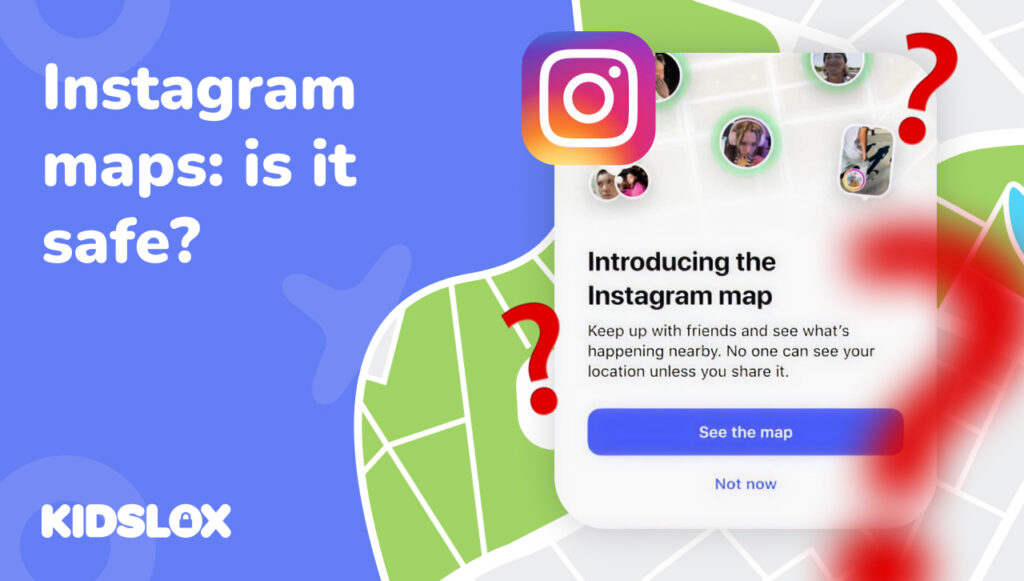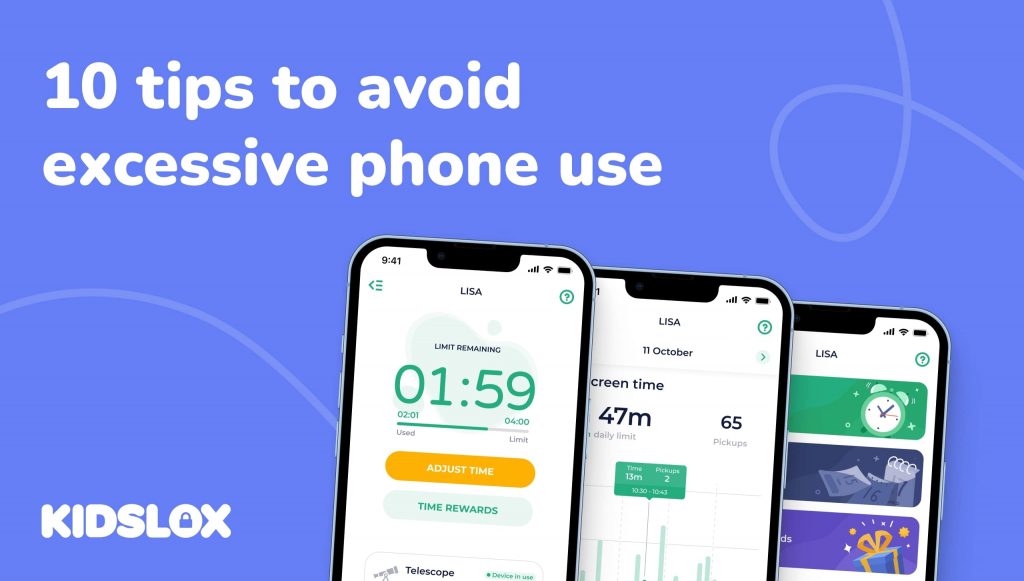Meta recently launched a new feature for Instagram – and in trying to keep up with other apps that offer location-based social content, everyone’s favorite image-sharing app now has its own Map feature.
Naturally, the idea that Instagram may show the exact location a user is (or was) when they post an image to the app brings up a variety of safety concerns. Now, parents across the country are scrambling to understand what it means for their teens’ safety online.
The feature has already prompted warnings from 37 state attorneys general and sparked heated debates about privacy and child safety on social media.
So what’s the new feature all about? In short, Instagram Maps allows users to share their real-time location with selected connections and view geotagged content from friends and public posts.
While Instagram insists the feature is “off by default” and requires explicit consent to activate, the reality is more nuanced than that simple assurance suggests.
As parents, knowing a bit more about how this feature works and its potential risks is going to be key to keeping children and teens safe online.
Let’s look at the latest on Instagram Maps – from the technical details to practical safety strategies that actually work.
What Is Instagram Maps and How Does It Work?
The Instagram map feature rolled out on August 6, 2025, in the United States, with worldwide expansion expected in the coming weeks to months. You’ll find it as a circular world map icon at the top of your teen’s direct message (DM) inbox.
While the feature may seem new, it’s actually similar to existing features such as Snapchat’s Snap Map (since 2017) and FourSquare Swarm.
When activated, this feature can show your teen’s exact, real-time location to their selected connections, updating whenever they open Instagram or when the app runs in the background.
Here’s the key detail many parents miss: while Instagram emphasizes that location sharing is off by default, the feature requires what Meta calls “double consent” to activate.
This means your teen would need to confirm twice before sharing their location. However, once enabled, the map becomes a powerful tool that tracks and shares location data in ways that might surprise you.
The IG map works similarly to other location-sharing services you might know, like Snapchat’s Snap Map or Apple’s Find My Friends.
But Instagram’s massive user base – including many adults and strangers who might follow your teen – raises the stakes when it comes to privacy and security concerns.
What Content Appears on Instagram Maps?
When your teen uses the Instagram location map, several types of content become visible to others.
First, if they’ve opted to share their location, friends can see where they are in real-time or where they were when they last opened the app. This location pin stays active and updates automatically, creating a digital breadcrumb trail of your teen’s movements.
Beyond personal location sharing, the map feature Instagram introduced also displays public posts, Stories, and Reels that have been tagged with location information.
These geotagged posts remain visible on the map for 24 hours, potentially revealing patterns about where your teen spends time, even if they haven’t explicitly shared their live location.
In short, even seemingly innocent posts from a favorite coffee shop or a school event could inadvertently broadcast their regular whereabouts to anyone who can view their content.
Are There Privacy Settings and Controls for Instagram Maps?
The Instagram map search and visibility settings offer four main options for location sharing.
According to Instagram, the default setting is “no one,” which keeps location data private. Your teen can also choose to share with “close friends only” – a curated list they control – or with “followers you follow back,” meaning mutual connections. The fourth option allows creation of a custom list of specific people.
While these options might seem straightforward, the devil is in the details (as it is with most social media apps and platforms.)
Many teens don’t fully understand the difference between followers and mutual connections, or they may feel social pressure to add people to their “close friends” list who aren’t actually close friends in real life.
Plus, the ability to hide location from specific accounts seems helpful, but it requires your teen to actively think about who might misuse this information – a level of threat assessment that many younger teens aren’t ready to work through.
How to Check and Manage Location Settings
To access and manage the Instagram maps settings, you’ll need to open Instagram and tap the messaging icon in the top right corner.
Look for the circular map icon labeled “map” at the top of the DM inbox. Clicking the gear icon reveals the location-sharing options.
If you see your teen’s location on their own map, it doesn’t necessarily mean others can see it, which many users have found to be confusing.
Can You Turn Off Instagram Maps?
To turn off Instagram location sharing completely, select “no one” in the sharing settings.
Remember to also check whether your teen has previously shared their device’s location with Instagram through phone settings. This is separate from the map feature but can still impact privacy.
Parents should regularly review these settings with their teens, as updates or peer pressure might lead to changes you’re not aware of.
Instagram Teen Accounts and Location Features
For users under 18, Instagram Teen Accounts add an extra layer of complexity to location management.
These accounts – which Instagram automatically applies to younger users – come with built-in restrictions that parents can monitor through the Family Center.
For instance, when a teen with a supervised account attempts to enable location sharing, parents receive a notification and can disable the feature entirely.
But don’t let these parental controls create a false sense of security. Savvy teens can create alternate accounts with false birthdays, bypassing these protections entirely. The supervision tools are helpful, but they’re not foolproof.
Why Privacy Experts and Parents Are Concerned about Instagram Maps
Real Safety Risks to Consider
The potential dangers of the Instagram map location feature aren’t theoretical – they’re real concerns backed by law enforcement and child safety experts.
The ability to track someone’s real-time location creates opportunities for stalking, harassment, and worse. Nefarious actors could potentially exploit this feature to identify and locate vulnerable young people.
Even if your teen only shares with “friends,” remember that online friendships don’t always reflect real-world relationships, and accounts can be compromised or impersonated.
The risk of “doxxing” – publicly revealing private information like home addresses – increases dramatically when location data is readily available.
A teen who regularly posts from home while sharing their location could inadvertently reveal where they live to someone with bad intentions.
Privacy advocates and lawmakers have specifically warned about these risks, with Rep. Debbie Dingell and others claiming that some locations have been shared without users’ full understanding or consent.
Common Misconceptions and Confusion
While the safety risks are one factor, there’s also the reality of confusion about Instagram Maps’ purpose and use.
Many online users are reporting that they’re confused about how the feature actually works. Some initially believed their location was being shared automatically, not realizing they were only seeing their own location on their personal map view.
Others don’t understand that geotagged posts can appear on the map even when live location sharing is turned off.
This confusion isn’t accidental. It reflects the complex nature of modern privacy settings and the way social media platforms layer multiple features together.
After all, what seems like a simple “on/off” choice actually involves multiple settings across different parts of the app.
Practical Tips for Parents to Keep Teens Safe
When it comes to any new app, an ounce of prevention is worth a pound of cure.
Parents should take an active role in monitoring their teens’ social media use, especially when it comes to location-based features. Here are some practical tips for parents to keep their teens safe while using these apps:
Implement A Monthly Privacy Audit
Things online can change quickly. So stay ahead of any new updates or changes with a monthly privacy audit.
Sit down with your teen and review all location-related settings together. Tell them that this isn’t about mistrust, but more about education and protection.
Check not just the map settings, but also look at who follows your teen, who they follow back, and what location information appears in their posts and stories.
Educate Your Teens About Real-World Risks
Without fearmongering, offer real stories and examples of how things could go wrong if they aren’t careful with their digital privacy and data.
Use concrete examples: “If someone knows you’re at the mall right now, they also know you’re not at home.”
Talk about how patterns of location data can reveal sensitive information about their daily routines, making them vulnerable to those who might wish them harm.
Have the “Location Conversation” with Your Teen
Approach this conversation with empathy and understanding. Your teen might feel that location sharing is essential for their social life – their friends might all be using it, and they don’t want to be left out.
Take things slow and recognize that their feelings are legitimate while explaining why safety must come first.
Create Clear Digital Family Rules
Create clear family rules about location sharing. For example, a rule could be that location sharing is only allowed with immediate family members, or only during specific events with prior permission.
Explain that these aren’t meant to limit their freedom but to help protect them. If it helps, share news stories (in age-appropriate ways) about how location features have been misused. This can help make the dangers concrete rather than abstract.
Making Informed Decisions About Instagram Maps Starts With You
Instagram Maps is just one piece of your teen’s digital footprint – and the number of ways that our digital experience is growing is multiplying. We absolutely need to talk to our kids about protecting their online identity and think about how they want to be represented in the digital world.
While the above tips can help, implementing a set of parental safety tools can help you create a routine and habit around safe digital use. Parental control solutions like Kidslox can provide consistent protection beyond any single app’s features – and give you a “ground zero” for all their digital activity.
Technology changes rapidly – the settings and features described today might be different tomorrow. As a parent or guardian, stay informed, stay involved, and most importantly, keep the conversation going with your teen about digital safety.
Your engagement and guidance remain the most powerful tools for keeping them safe online.
Want to learn more about the latest technology and social media releases – and how to manage the changes as a family? Check out our full cataloge of guides on how to manage safe digital use on Kidslox.





